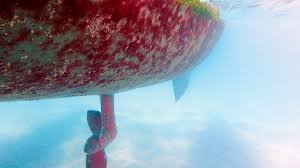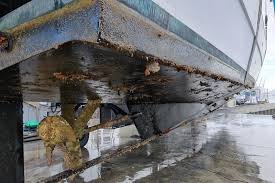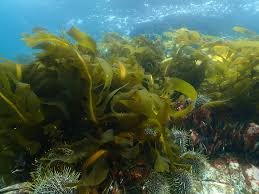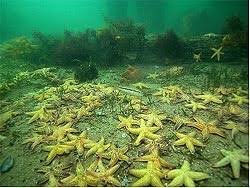Australia’s pristine marine environments are fiercely protected by stringent biosecurity regulations. As a yacht delivery skipper, ensuring your vessel complies with these requirements is paramount to a smooth and hassle-free arrival. Failure to adhere to these rules can result in significant delays, substantial fines, and strict quarantine measures. 
Understanding the Threat: Why Biosecurity Matters
Australia’s unique marine ecosystems are vulnerable to invasive species. Organisms like barnacles, algae, and mollusks, when introduced from foreign waters, can disrupt native habitats, impact commercial fisheries, and pose a threat to human health. The Australian Department of Agriculture, Fisheries and Forestry (DAFF) implements strict biosecurity measures to prevent these introductions.
The Golden Rule: Cleanliness is Key

1. Hull Cleaning: A Rigorous Process
- Pre-Departure Cleaning: Ideally, the hull should be cleaned within 24 hours of departure from the last port. This minimizes the accumulation of marine growth during the voyage.
- High-Pressure Cleaning: Use a high-pressure washer to remove all fouling, including barnacles, algae, and slime. Pay particular attention to areas around the waterline, keel, rudder, and through-hull fittings.
- Underwater Inspections: If possible, conduct underwater inspections during the voyage to monitor hull cleanliness. Any visible fouling should be addressed immediately.
- Documentation: Maintain detailed records of all hull cleaning activities, including dates, locations, and methods used. This documentation may be requested during the biosecurity inspection.
2. Sea Chests and Through-Hull Fittings: Hidden Habitats
- Inspection and Cleaning: Inspect all sea chests and through-hull fittings for marine growth. These areas can harbor invasive species and require meticulous cleaning.
- Flushing: Flush all seawater systems, including engine cooling systems, air conditioning systems, and sanitation systems, with fresh water.
- Documentation: Record all inspections and cleaning activities.
3. Anchor and Chain: Potential Carriers
- Thorough Cleaning: Clean the anchor and chain thoroughly before entering Australian waters. Remove all mud, sand, and marine growth.
- Inspection: Inspect the anchor locker for debris and marine organisms.
- Documentation: Record the cleaning and inspection of the anchor and chain.
4. Internal Spaces: Preventing Contamination
- Cleaning and Disinfection: Clean and disinfect all internal spaces, including bilges, lockers, and storage areas.
- Garbage Disposal: Dispose of all garbage appropriately before entering Australian waters.
- Food Storage: Ensure all food items are properly stored and sealed to prevent the introduction of pests.
5. Equipment and Stores: Careful Consideration
- Inspection and Cleaning: Inspect all equipment and stores for potential contaminants, including sails, ropes, and diving gear.
- Timber Products: Declare all timber products, including furniture and dunnage. Timber may require treatment or fumigation.
- Documentation: Record all inspections and cleaning activities.
6. Ballast Water Management: A Critical Component
- Ballast Water Exchange: If carrying ballast water, comply with Australian ballast water management requirements. This may involve exchanging ballast water in designated areas.
- Documentation: Maintain accurate records of all ballast water exchanges.
7. Pre-Arrival Reporting: Timely Communication
- Notice of Arrival: Provide DAFF with a Notice of Arrival (NOA) at least 96 hours before entering Australian waters.
- Biosecurity Reporting: Complete and submit a biosecurity pre-arrival report.
- Documentation: Ensure all required documentation is readily available for inspection.
8. Inspection Process: What to Expect
- Inspection Location: Biosecurity inspections are typically conducted at the first port of arrival.
- Inspection Scope: The inspection may include a visual inspection of the hull, internal spaces, and equipment, as well as a review of documentation.
- Cooperation: Cooperate fully with biosecurity officers and provide accurate information.
9. Post-Inspection Actions: Addressing Issues
- Treatment or Cleaning: If biosecurity officers identify any issues, they may require treatment or further cleaning.
- Quarantine: In severe cases, the vessel may be placed in quarantine.
- Documentation: Maintain records of all post-inspection actions.
10. Staying Informed: Resources and Updates
- DAFF Website: Regularly check the DAFF website for the latest biosecurity requirements and updates.
- Biosecurity Advisories: Subscribe to biosecurity advisories to stay informed of any changes.
Conclusion: A Proactive Approach
Preparing your yacht for Australian biosecurity requires a proactive and meticulous approach. By adhering to the guidelines outlined in this guide, you can minimize risks, ensure a smooth clearance, and contribute to the protection of Australia’s invaluable marine environments. 




Leave a reply